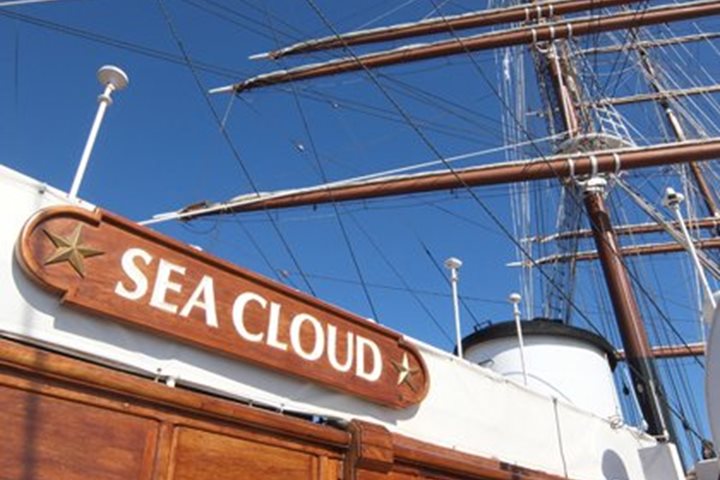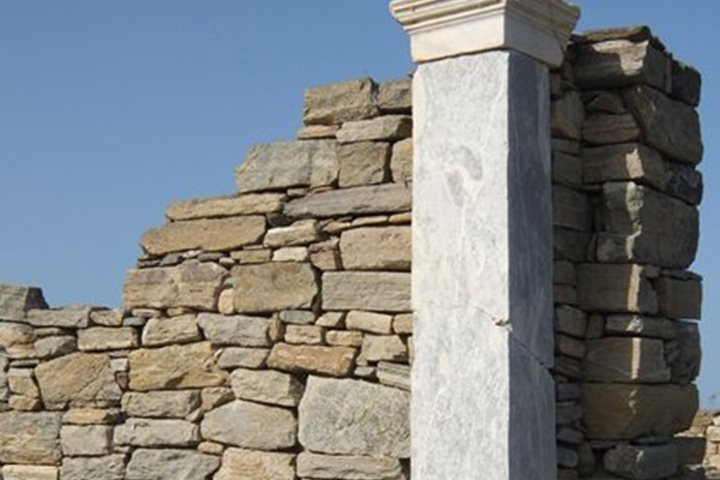The day was devoted to sailing, with plans to leave the Cycladic Islands in our wake and sail to the Dodecanese Islands on the east side of the Aegean. The Aegean Sea lies on the European continental plate, which was actually flooded with the rising Mediterranean Sea level. All the islands that we see today are the mountaintops of the submerged landscape, and their proximity enticed the ancient Aegean cultures to venture out in primitive boats from one island to the next and gave rise to the deeply rooted seafaring cultures that persist today.
On board Sea Cloud we certainly knew when we had left the shelter of the easternmost of the Cycladic Islands, Amorgos, in our wake, with 30 knot winds raging down the central Aegean and funneling south. Some of us braved the weather decks to watch the sailors go aloft at 0800 to put the lower and upper topsails in their gear, and we all waited with bated breath for their return to the decks in the howling winds. The winds were too strong to set anything above the “storm sails,” as the lower and upper topsails are known, but once set on all masts we sailed south and Sea Cloud settled comfortably in to the rhythm of the following seas. We sailed all day at about 6 knots as we passed the Dodecanese Islands of Kalymnos, Kos, Nisyros, and Tilos on our port side, reaching almost to Chalki and seeing the northern tip of Karpathos in the distance.
Sea Cloud was built for open water sailing, as we would learn this evening with a presentation on the riveting history of the ship. We all knew that she is a legendary and historic vessel, but few of us knew of the many incarnations that she’d had after the first years that broker E.F. Hutton and cereal heiress Marjorie Merriwether Post had sailed her so hard around the world. Serving as a diplomatic vessel based in the Soviet Union on the pre-WWII European stage; de-masted and used as a U.S. Navy meteorological ship in the rough North Atlantic during WWII, where she was the first U.S. Navy ship to experiment with a racially integrated crew; sold to the brutal dictator Rafael Trujillo in the Dominican Republic and used by his playboy son as “The Floating Funhouse” for two years at Santa Monica Pier while “entertaining” an endless procession of Hollywood starlets; run down in the Canary Islands after a coup d’état while trying to flee to France, and then left to rust in the tide flats of Panama, only to be revived after the worldwide interest in tall-ship sailing inspired by the American bicentennial … and much, much more. The history of the legendary Sea Cloud is dizzying in its depth and variety, but it left us with the undeniable awareness that we were all part of something very, very special.









